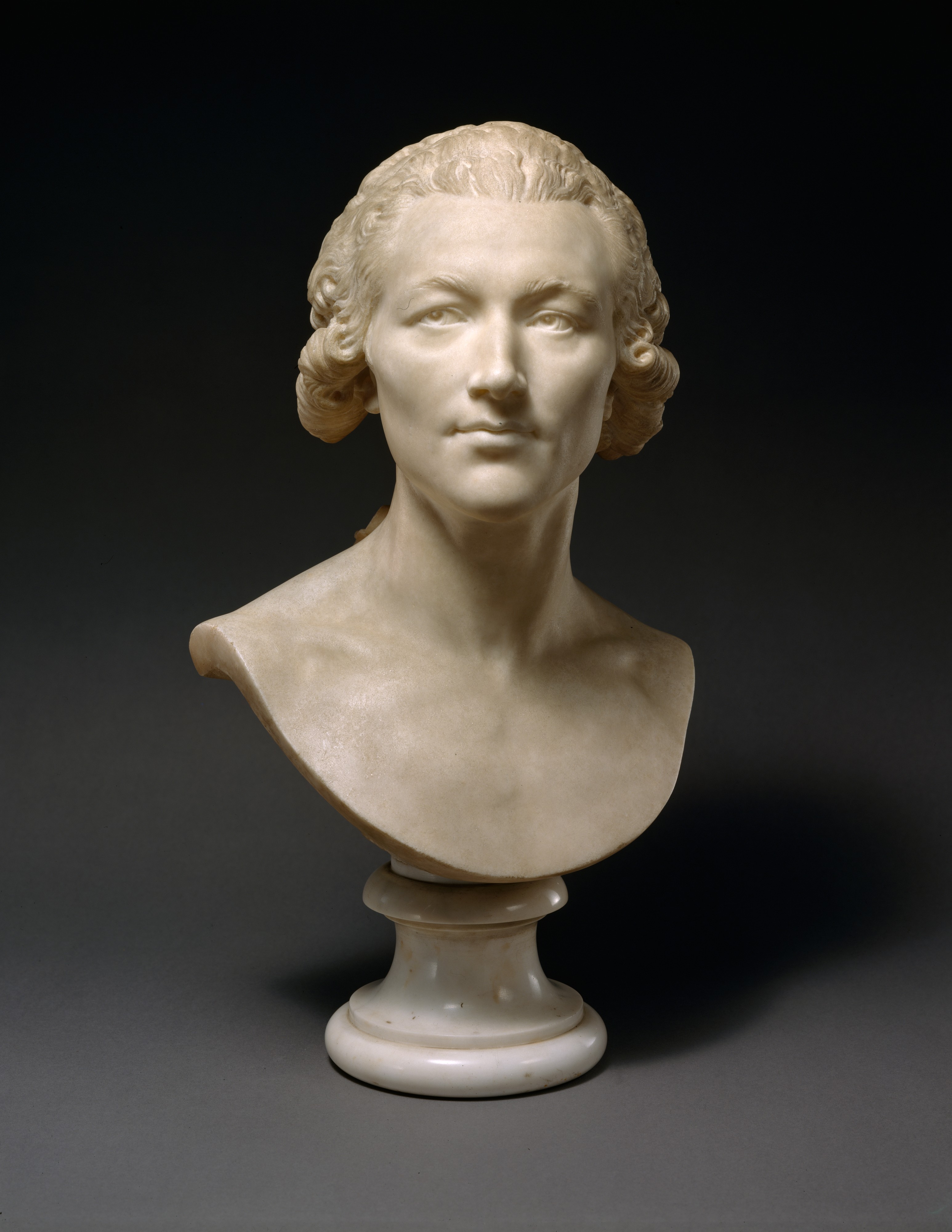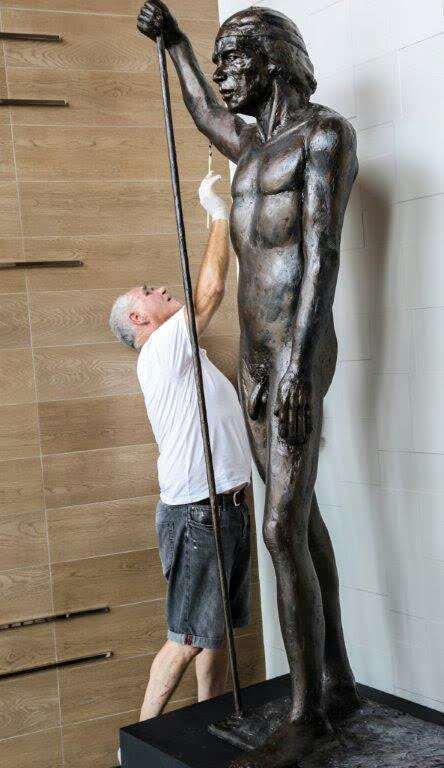Forming the Human Kind: Portrayals of the Body in Sculpture
Sculpting the Human Form: Portrayals of the Body in Sculpture is a detailed exploration of the imaginative representation of the body throughout background. This exhibit looks into the different strategies, designs, and social viewpoints that have actually shaped the way artists have portrayed the human type in sculpture. From the elegant marble sculptures of old Greece to the intricate masterpieces of the Renaissance, from the ornate and flamboyant Baroque and Rococo sculptures to the avant-garde and abstract expressions of modern and contemporary sculpture, this exhibition offers a captivating journey through the evolution of this timeless art kind - Robert C Hitchcock Sculptor. By taking a look at the varied interpretations and depictions of the body, site visitors will obtain a deeper understanding of the creative, social, and societal influences that have actually formed our understanding of the human kind.
Ancient Greek Sculptures

Among the defining characteristics of Old Greek sculptures is their focus on symmetry. Each part of the body is thoroughly crafted to be symmetrical to the whole, creating a feeling of equilibrium and consistency. The sculptors paid careful interest to every information, from the positioning of muscular tissues to the positioning of limbs, guaranteeing that each number showed up both graceful and powerful.
The Greeks likewise valued the principle of idyllic elegance. As opposed to portraying the flaws and problems of the human kind, they looked for to develop an idyllic variation of fact. The sculptures frequently depicted gods, goddesses, and athletes, with their bodies formed to excellence. Portrait Sculptor. This idyllic portrayal of the human form not just well known physical elegance but additionally served as a way of motivating and uplifting the visitor.
Renaissance Masterpieces
Continuing the exploration of the representation of the human kind in sculpture, Renaissance masterpieces additionally improve the idealized concept of appeal, structure upon the balanced and unified proportions of their Ancient Greek predecessors. Throughout the Renaissance period, which extended from the 14th to the 17th century in Europe, musicians looked for to revive the classical ideals of ancient Greece and Rome. They examined and copied the jobs of the old masters, making every effort for a realistic representation of the human body.
His masterpiece, the sculpture of David, exemplifies the excellence and poise that ended up being associated with Renaissance art. Standing at over 17 feet tall, the sculpture portrays the biblical hero in a state of tranquility prior to his battle with Goliath.
An additional remarkable Renaissance artist was Donatello. His sculpture of Saint George, produced in the early 15th century, showcases the artist's capacity to communicate stamina and nobility via the human kind. The sculpture portrays the legendary dragon-slaying saint in a positioned and certain position, showing a feeling of heroism.
Renaissance work of arts not only celebrated the physical elegance of the body however additionally shared much deeper feelings and significances. Through their thorough interest to detail and experienced craftsmanship, Renaissance artists raised the art of sculpture to new elevations, leaving a long lasting legacy that remains to inspire musicians to this particular day.
Baroque and Rococo Sculpture
Rococo and baroque sculpture exemplifies the ornate and extravagant representation of the human form throughout the 17th and 18th centuries. Characterized by its dynamic and significant style, Baroque sculpture intended to captivate customers through its grandeur and psychological strength. Artists such as Gian Lorenzo Bernini and Alessandro Algardi developed sculptures that conveyed motion, often illustrating numbers in dramatic postures. Using light and shadow further improved the feeling of drama, producing a staged effect.
Rococo sculpture, on the various other hand, emerged as a reaction to the grandiosity of the Baroque period. They typically depicted figures in sensual and graceful poses, mirroring the laid-back and wayward nature of the Rococo design.
Both Baroque and Rococo sculpture put an excellent focus on the human type, celebrating its beauty and expressing a variety of feelings - Portrait Sculptor. Whether it was the vibrant and effective numbers of the Baroque or the stylish and enchanting numbers of the Rococo, these sculptures recorded the essence of the human experience, leaving a long lasting influence on the art globe
Modern and Contemporary Sculpture
The advancement of shaping the human form proceeds in contemporary and modern sculpture. With the arrival of brand-new materials and strategies, musicians have pressed the limits of representation, testing conventional ideas of kind and appeal. Modern sculpture emerged in the late 19th century as a response to the transforming social and political landscape. Musicians such as Auguste Rodin and Constantin Brancusi sought to record the essence of the human form, highlighting emotion and activity. Rodin's "The Thinker" and Brancusi's "Bird precede" are iconic instances of this period.
In the 20th century, the surge of abstraction and conceptual art brought new opportunities for sculptors. Artists like Henry Moore and Barbara Hepworth checked out the partnership in between type and room, creating abstracted and organic numbers that challenged typical notions of depiction. Moore's huge bronze sculptures and Hepworth's sculpted stone works are celebrated for their cutting-edge usage of materials and their ability to evoke a sense of the body in a non-literal means.
Contemporary sculpture remains to push the boundaries of representation and check out brand-new products and strategies. Musicians like Antony Gormley and Ron Mueck develop hyper-realistic sculptures that challenge our understanding of the body, while others, such as Louise Bourgeois and Kiki Smith, make use of the body as a metaphor for collective and personal experiences. The human form stays a powerful subject in sculpture, supplying a system for musicians to explore identity, emotion, and the human condition.
Cultural Point Of Views on the Human Body

In the expedition of forming the human kind, the assessment of cultural perspectives on the human body discloses a abundant and diverse tapestry of depictions and interpretations. Throughout history, various societies have held unique ideas and worths pertaining to the body, leading to unique artistic expressions - Robert C Hitchcock Sculptor. These cultural point of views form the means the human body is portrayed and viewed in sculpture, mirroring social norms, religious ideas, and visual perfects
As an example, ancient Greek sculptures celebrated the idealized human type, stressing physical elegance and athleticism. The sculptures portrayed gods, heroes, and athletes with completely proportioned bodies, symbolizing the Greek idea of physical excellence. In comparison, old Egyptian sculptures concentrated on the preservation of the body in the afterlife, illustrating numbers with stiff positions and idyllic attributes. The Egyptians thought that the body needs to exist in a way that guaranteed its eternal presence.
Similarly, cultural viewpoints on the body in African art usually stress common identity and spiritual beliefs (Bronze Sculptures). Sculptures from various African societies illustrate the human body with exaggerated attributes, representing genealogical connections and cultural worths. Native cultures in the Americas additionally have special perspectives on the body, usually illustrating it in a spiritual context and emphasizing the link in between people and nature
The examination of social perspectives on the body in sculpture enables us to gain understanding into the worths, beliefs, and aesthetics of various societies throughout background. It highlights the diversity of human experiences and the means in which art shows and forms our understanding of the human type.

Verdict
Finally, the portrayal of the human body in try this site sculpture has actually progressed in time, reflecting various cultural viewpoints and imaginative motions. From the idyllic figures of Old Greek sculptures to the practical and emotive Renaissance masterpieces, and the intricate information of Baroque and Rococo sculptures, to the abstract and experimental forms of modern-day and contemporary sculpture. The body has actually been a topic of fascination and imaginative exploration throughout background, showcasing the diverse analyses and expressions of the human type.
Sculpting the Human Type: Portrayals of the Body in Sculpture is a detailed exploration of the creative representation of the human body throughout background. From the beautiful marble sculptures of old Greece to the elaborate work of arts of the Renaissance, from the luxuriant and flamboyant Baroque and Rococo sculptures to the avant-garde and abstract expressions of modern and contemporary sculpture, this exhibit offers an exciting journey with the development of this timeless art type. Musicians like Antony Gormley and Ron Mueck create hyper-realistic sculptures that test our assumption of the human body, while others, such as Louise Bourgeois and Kiki Smith, utilize the body as an allegory for personal and collective experiences. The human form stays an effective subject in sculpture, supplying a platform for musicians to explore identification, feeling, and the human condition.
From the idealized numbers of Old Greek sculptures to the realistic and emotive Renaissance masterpieces, and the elaborate information of Baroque and Rococo sculptures, to the abstract and speculative forms of modern and contemporary sculpture.